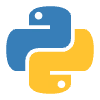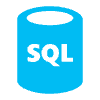Data Story Telling
Contact for pricing
About this service
Summary
Deliverables
What's included
Data Story Telling
Data storytelling is the process of using data and analytics, combined with narrative and visual elements, to effectively communicate insights and findings. It’s a crucial skill in the world of data science and analytics, as it helps bridge the gap between raw data and actionable insights, making data accessible and meaningful to a wider audience.
Data Analytics
Data analytics is the process of examining, cleaning, transforming, and modeling data to discover useful information, draw conclusions, and support decision-making. It involves a range of techniques and methodologies to analyze data from various sources in different sizes and formats, to uncover hidden patterns, correlations, trends, and insights.
Example projects






